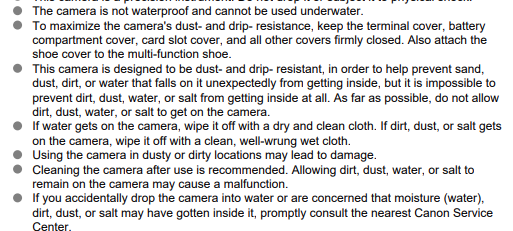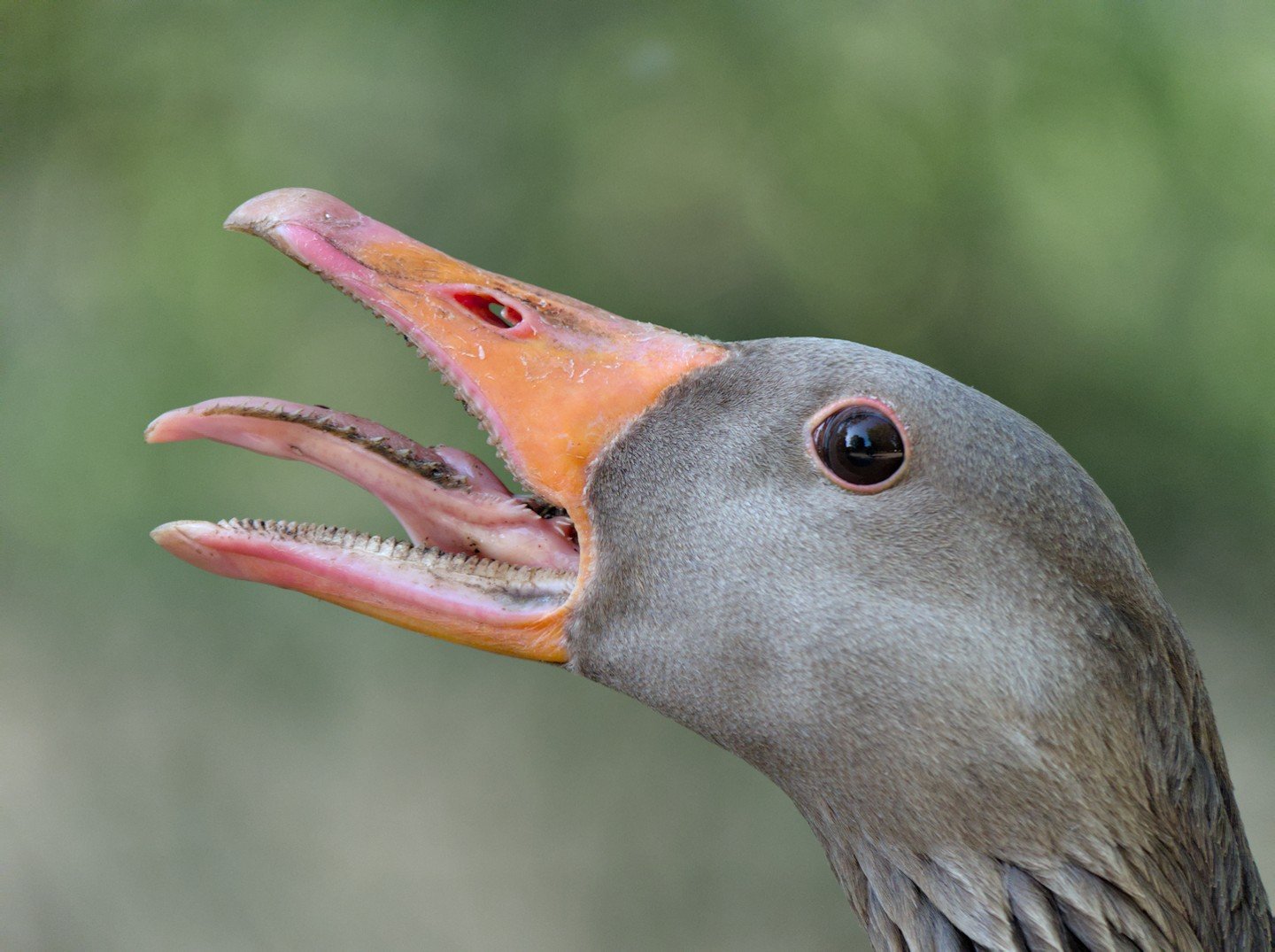Hey everyone, I’m new to photography and wondering how much people spend on lenses compared to the camera body they’re mounted on? Does it make sense to buy a higher end lens for a mid range camera, or would you be better off getting a slightly cheaper lens and spending some of the money on a nicer camera? Mainly wondering about used gear…
Currently shooting with my SO’s D3500 when she isn’t using it, and thinking of buying my own. Considering a used Pentax since weather resistant lenses seem easier to find for them than other brands…
Edit: how practical is it to use a Pentax lens on a Nikon with an adapter, and vice versa? I assume the electronics like AF and VR won’t work?
Hobbyist here. I love some great pictures more than some great camera features. Overall, for my lenses I have spent about 3x as much as for my cameras.
The money is absolutely best spent on the lens. Especially considering that the lens can be used for decades or more if you stay with the same lens mount system.
And generally speaking, you’ll get better quality photos from a mid range camera with a high quality lems than you will with a high end camera with a middling quality lens.
That makes sense, but at what point should you think about a nicer camera? If I’m looking at $450 used lenses should I spend more than $150 on a camera? Those numbers are somewhat arbitrarily based on a Pentax K50 and a 200mm/2.8 prime lens.
Think about a nicer camera when the camera functions themselves limit your ability to take the photos.
Action/sports photography is a good example. A mid range camera can do a decent job of shooting sports and action, especially when coupled with a good/fast telephoto lens.
However, you might find that the camera’s focusing system isn’t fast enough or accurate enough when shooting action, then you’d start looking at camera’s that have faster and/or more accurate focusing systems.
The most important thing to NOT do is upgrade the camera body just to upgrade because of FOMO and youtube photographers telling you how great the CaNikony 5DAlpha Mk 10,000 is.
Upgrade the body because it’s actually limiting you, and upgrade to something that removes/reduces those limitations.
I guess it depends what you want to do with it. I do lots of product photography, so I know exactly what lens I need for my studio and the type of product I am shooting. So, I spent about as much on a lens as I did a body. Getting a better sensor with more accurate colors saves me time in the post-processing step.
When I was starting out, I just used a kit zoom lens, but realized that most of my shots were around the same focal length. So that is when I invested in a faster, nicer prime lens at that focal length.
Both me and my SO like shooting wildlife and nature, so her 70-300 zoom lens is getting a lot more use than the 18-55. I’m thinking about getting a Pentax with either a similar zoom lens or a prime telephoto, hopefully that would complement the D3500 and not overlap too much. The Nikon seems too fragile for a kayak trip, for example.
In terms of image quality, the lens matters more than the body. If you’re able to get the shots you want, but you want them to look better, get better lenses.
For some situations, especially fast action and low light, the body can have a more significant role to play. Fast action benefits from high burst rates and fancy autofocus algorithms. Low light benefits from IBIS (if nothing is moving in the shot) and a less noisy sensor.
I like how you broke that down. Faster autofocus might help with shooting birds, but a longer focal distance is what I really need right now. Guess I need to spend some time researching lenses…
Unless you manage to stick to only one lens and/or buy a dirt cheap body you’re probably going to wind up spending more on glass in the end.
This is super reductionist, but nicer/newer bodies being you:
- (generally) better dynamic range, although some current bodies are giving up dynamic range for readout speed
- better high ISO performance
- more pixels for cropping
- better video capabilities
Everything else is basically a creature comfort. You can absolutely snag great sports/action/wildlife photos with even a D40, you’ll just have to work harder for it.
Lenses come with engineering tradeoffs and challenges, so odds are you’ll wind up with more than one based on what you intend to photograph. One for things far away, one for things up close, one wide aperture fixed focal length prime for low light, one compact walk-around lens etc.
You don’t have to buy more than one lens, but odds are you’ll wind up with more than one.
Higher $$ lenses tend to offer better resolution and/or image quality, although that’s not a hard and fast rule.
If I was budget shopping, I would strongly consider a D7x00 camera. They are the “top dog” Nikon APS-C camera line and all can drive any Nikon f-mount autofocus lens, including lenses going back to the 70s. This gives you tons of used lens possibilities. The older lenses especially, mechanical autofoced focused instead inside-the-lens motors, are pretty affordable. The f-mount was very popular, was around for a long time, and as Nikon shooters move to mirrorless used f-mount lenses have become even more plentiful.
I personally wouldn’t take any camera kayaking without first putting it in something like a DiCAPac or the like. Other than Olympus in micro four thirds land, no company will actually provide a waterproof ip rating for their camera bodies or lenses.
As for adapted DSLR lenses on a DSLR body, I would personally not to there. For any camera/lens combo, the flange distance needs to be corrected. Mirrorless cameras lend themselves to adopting DSLR lenses because mirrorless cameras have very little distance between their sensor and flange, which means the adapter can make up that space easily. That’s not always the case on a DSLR, so you might lose the ability to focus up close or at infinity. The electronics may work, but they generally won’t be as reliable/responsive/consistent.
Seems like waterproof housings cost 2-4x as much as a camera, and I think they only work with special lenses? I don’t need a waterproof rating, I’m comfortable with the risk based on what I’ve read on forums about weatherproofing. And I don’t really expect to get wet on the kind of kayak trips that I’d bring a camera on (I normally have a couple of canine passengers anyway, so it’s usually pretty mellow).
I didn’t realize mirrorless cameras had that advantage with adaptors, but those forums posts I saw about FTZ adaptors make a lot more sense now. Can you cross brands when adapting a DSLR lens to mirrorless body without losing electronics like AF?
Some of the waterproofing options, like the company I mentioned, are in the $1xx price range. Totally agree that they’re not cheap. For low-key/leisure kayaking I agree on not being too concerned. Size/accessibility/keeping it somewhere it won’t get drips becomes a more important factor than outright waterproofness.
Mirrorless cameras are going to either be $$ or you’re going to be looking at older bodies like the A7 mk1 or A6000 that will still generally be more expensive than a DSLR without bringing much advante other than having a current generation lens mount. That would let you upgrade your body in the future for quality of life while using the same lenses unadapted.
Some adapters do translate electronic communications between different lens mounts (eg Nikon F lenses to/from Sony E bodies), but since the messaging strategy of those mounts was developed independently there will be some level of “not quite right” that occurs in the translation. How much this is to you probably depends on what you’re going to be taking pictures of (slow moving things vs fast moving things).
I would personally avoid adapters if starting fresh unless there’s a very compelling case that’s specific to your use case.
OK, I found the waterproof case you were taking about and that actually seems like a pretty good option. A $90 case would let us safely use the D3500 on the kayak, and let’s me think about other features when picking out my own camera. Thanks for the suggestion and other info, it’s really helpful.
Edit: Looks like that case limits you to a ~50mm lens, which would be pretty limiting for shooting birds. On the other hand, it sounds like it’s fairly common to have 2 camera bodies to avoid having to change lenses when the camera is wet/dirty, so maybe we could use the D3500 with a short lens in a waterproof case, and also get a weatherproof camera with a super telephoto prime. Lots of options to consider…
Spend as much as you can on the lens. The camera is negligable. Listen to someone who made the horrible mistake of inverting that philosophy once.
Adapting with lens/camera communication usually does not work. There are some bayonets which can do it, but they are very, very limited.
Forget adapting anything to a DSLR. In all honesty, you really should buy mirrorless cameras. Reason being mirrorless cameras have adapters to basically every bayonet ever created. DSLRs do not. With DSLRs you are locked into the manufacturer of your DSLR for your lens choice, which may be very limiting.
Also, try to adapt manual focus lenses to your camera. Many of mankind’s greatest glass is manual focus only. Bonus is you can get a manual focus lens for dirt cheap, one that has quality that will blow your socks off. People think that old optics are inherently worse, which is false. Optics haven’t had any development since a hundred years, with a few minor exceptions.
Optics haven’t had any development since a hundred years, with a few minor exceptions.
This is patently false. Here are some modern advancements in lenses in the past few decades.
- Many more lens elements per lens, designed with advanced computer programs.
- Aspherical lens elements.
- Apochromatic lens elements.
- Multilayer anti-reflective coatings. Super advanced coatings! Some that even repel water and oil.
- Fancy new optical glass, including fluorite glass.
- Diffractive optics to make lightweight telephoto lenses.
- Lightweight plastics and composits in the lens bodies that make them lighter to carry around.
The result is much sharper photos with less abberation and distortion. Especially with zoom lenses. That’s one of the real advantages. Carrying around an entire bag of prime lenses sucks. Having a compact zoom lens with excellent optics is such a blessing. Having to change lenses to get good framing results in missed shots.
For me, personally, I think autofocus is the best thing since sliced bread. Today’s AF is lightning fast and silent due to ultrasonic motors. Nearly every camera body has an array of amazing phase detection AF points, and throwing them away to use some heavy, antique MF lens will result in missed photos. Some cameras won’t even meter properly through an MF lens!
Take off the nostalgia glasses and give some honest advice. The only reason to buy old MF lenses is because they’re cheap.
If you can get a cheap, wide aperture, MF prime lens, do it. But only because it’s cheap. Not because it’s “mankind’s greatest glass”. That’s utter nonsense. Good modern lenses blow away old ones. This is without even considering that some glass ages and yellows with time.
This is a great write up! I would add that also the more affordable lenses nowadays are really sharp and much better optically than anything previous. More money gets mostly just more light gathering capability and water and dust proofing.
While I agree with you that my claim was exaggerated, my claim remains true. While the differences you have outlined are correct, the differences for the photographer are basically negligible because it means essentially three things:
- Better zooms
- Better extreme wide angle optics (< 35 mm)
- Yes, better coatings (which have a small impact on image quality, compared to optical design)
Well, before computers, all lenses were calculated using geometric optics, and these lessons are still true. The computer just makes it faster.
And on the topic of coatings, yes, we have gained fluoride element lenses, but what about thorium oxide doted lenses? Yes, you can’t use them on digital cameras because the radiation dosage will kill the sensor eventually, but if you have ever seen the image output of a thorium oxide lens, you know what I’m talking about.
Also additionally on the topic of them being bad, alright I’m getting the rare stuff out.
- Auto Rikenon 55/1.4
- Zeiss Distagon 35/2
- Carl Zeiss Jena Biotar 58/2
And there are many more where that came from. Old stuff is useful. I’d genuinely like to see a modern post-2000 lens that has optical performance anywhere close to the outlined 3 lenses. Resolution isn’t everything, there are more qualities to a photographic lens. We are artists, not computers, needing the highest resolution lens for machine vision tasks. And I do enjoy more organic lenses, like three-element lenses. Yes, the resolution is rubbish, but everything else is great. The colour reproduction is insanely good, as is the micro-contrast, together with its brilliant, out-of-focus rendering. These are just qualities that you cannot get with an 11 element prime lens where every small bit of spherical aberration or transverse chromatic aberration has been tuned out because in the end you add more elements and kill some of the signal. That’s the natural trade-off and computers cannot fix the fundamental issue of absorption. You cannot buy physics, more elements mean more absorption. This will always remain the same, no matter if it’s 100 years ago, or in 1000 years, the laws of physics stay the same.
Tldr: If you only take away one thing, then just give old lenses a try. There’s no harm in trying the cheaper ones.
Edit: And also, yes, lightweight plastics means the lens will be lighter, but you pay the price in durability. And I will always prefer durability. Also, apochromatic lenses aren’t only possible because of computers. There are apochromatic lenses long before computers were a thing. Mostly today’s preferences have changed. Today means resolution at the cost of everything because that’s what sells products. But lenses are more than just resolution. They have many more qualities that are important as well for aesthetic photography. Again, we’re taking images for aesthetic effect, not for computers that need something for machine vision tasks.
What’s a good manual focus lens?
My, my, you are asking a big question herehere are some to start out.
- Carl Zeiss Jena Tessar 50/2.8 (Soap bubble bokeh and three element goodness.)
- Auto Chinon 55/1.7 (beautiful, smooth and perfect bokeh You have never seen anything like it. They are quite rare, however.)
- Meyer Optik Görlitz Primoplan 50/1.9 (Beautiful micro contrast and very smooth gradations. Brilliant black and white lens.)
- Meyer Optik Görlitz Primotar 50/3.5 ( four element goodness. So, essentially, most of the organic qualities of the Jena Tessar, but with the more organic components toned down. Microcontrast suffers a wee bit under the additional element, but not too much.)
- Meyer Optik Görlitz Telemegor 180/5.5 (The long telephoto portrait lens. Enough said.)
- Super-Takumar 135/3.5 ( If you check online and find this lens for maybe 30 to 50 quid, you’ll think you’re insane and you made a mistake and you accidentally bought a way more expensive lens. The micro contrast and resolution of this lens is unreal, especially considering the price.)
- Nikkor 28-85 mm f/3.5-4.5 AF ( You can buy them dirt cheap for less than 100 quid online, and it is a good competent zoom. It even has a macro switch, so if you’re just starting out and want to spend little money, this lens is your go-to.)
All of these lenses should be readily available on eBay. I excluded the rare stuff.
Edit: And there’s much more. I still have a very limited experience with that. I have some more than I outlined. But believe me, there’s some great stuff out there waiting to be discovered. I also fixed a spelling mistake
The Helios 44 58/f2 should be on here as well, but that’s one of the more obvious options.
I actually just bought a speed booster to get rid of the crop factor on my aps-c Sony a6000, really excited to try it out and get more of that swirly bokeh.
I like the crop factor because it essentially makes your optics better for free. Since it will only use the center of the lens, which is its best part. From your experience, does a speed booster actually have a large impact on optical quality, since you are adding an additional glass element?
Thanks for the response. I was leaning towards a DSLR because it seems like the used market is a lot stronger than mirrorless, which I assume means cheaper gear. Does that make sense, or would you still recommend a mirrorless? I already mentioned this in another post, but most of my shooting has been nature/wildlife, so better low light performance might be nice. And autofocus seems almost required for shooting wildlife, but I’ll keep my eyes open for a nice (and cheap) MF prime for landscape shots.
Well, I wouldn’t say that one market is inherently stronger than the other. You can also buy a mirrorless camera for the price of one Pentax K70. Again, it just depends what’s better for your use case. If you only do wildlife photography and nothing else, a DSLR is the better choice because you get better autofocus for cheaper. But instead of a Pentax K70, I’d actually recommend the Nikon D7100. It was basically Nikon’s semi-professional offering, and the camera is great to this day. Also, Nikon’s product line for wildlife photography is just way better. An additional plus being that the Nikon Bayonet is the most supported bayonet for adapting. Since even with lenses that do not have an aperture ring, you can control the aperture on the adapter if you wish to adapt it to a mirrorless camera, for example. The D7100 also supports Nikon’s slightly older AF-D lenses. This just means the autofocus motor is inside the camera. That just means you sacrifice focus speed for cheaper wildlife lenses. Beyond the lookout for some AF-D Nikon glass. If you’re deterred because it’s older, look at few comments down. I had a conversation with a guy that basically recapitulates both perspectives.
Some level of weatherproofing in the camera and lens is a hard requirement for me, and I’m seeing a lot more options for Pentax lenses. But there’s a good chance I’m just not looking for the right thing… Is there a weatherproof super telephoto DX mount lens for under $600? I’m finding Pentax lenses for around $200. Mainly looking at used gear, BTW.
Edit: also, by “stronger market” I meant more supply, which would push prices down. In hindsight that wasn’t very clear…
Firstly, the Nikon cameras just use one mount, the so-called Nikon F mount. You can mount any sort of lens to a DX camera. I usually buy lenses from eBay, so that’s where I checked. I cannot talk about weather-proofing because I have no experience with it. I keep my stuff out of the rain. Maybe think about Buying a cloak in olive green or something that blends in with the natural environment to throw over yourself because it will cloak you and protect the camera and the lens from rain.
- Nikorr Af-S 200-500mm 5.6 ED VR ( AF-S in Nikon speak means the autofocus is internal, so it will be nice and snappy.)
- Nikkor AF-S 70-200 2.8 FL ED VR ( Used it will still be over budget for you, but the quality is absolutely worth it.)
- Tamron 70-200 2.8 DI VC G2 ( Basically the above lenses little brother.)
I think one of those three should meet your criteria.
When you actually get the device manuals, the suppliers are remarkably coy about what “water-resistant” actually means and when it applies, beyond “less prone to water damage than those that are not”. So just be aware what you might mean by the term may well not be what the supplier means - and second hand items may have lost some resistance as well.
Also, if you are in rain or drizzle, you’re probably not going to be taking the best photos regardless of kit!
Yeah, I keep reading that on various photography forums. I’m not going to go swimming with it or anything, but I want a camera I can take on kayak trips and shoot on the water. And, worst case scenario, my budget takes into account the risk of the camera breaking.
Kayaking sounds more like you need water-proof than water-resistant. For interest, the following is from the “water-resistant” Canon R5 MkII:

I wouldn’t take it on anything more than class II rapids (ie. no whitewater). We don’t get wet on most trips, and that’s without trying to keep anything safe and dry (my phone is waterproof). IMO the risk is only slightly higher than walking next to a swimming pool or river with your camera, you could fall in but most likely won’t.
But someone else pointed out a $90-100 waterproof case, which is a better option that buying another camera just for this.
Quality lenses benefit you immediately, whatever body you stick them on.
Quality bodies only benefit you if you have found yourself limited with your previous bodies, and specifically need the new features.
I like full frame sensor so I bought the cheapest full frame camera and decent lenses then later upgraded to a newer camera that used the same mount. I ended up selling everything I had that was canon when I switched to Sony mirrorless. I got a nice 50mm prime lens and that’s it so far, I ended up getting an adapter to use my nikon film lenses with it but the pictures don’t look as nice as the sony 50mm and no autofocus on the nikon lenses.
I think picking a lenses mount might be a good starting point. When I was shooting Canon I was able to use my full frame lens on my digital 6d and also the Canon film A2 so it was a really nice setup
For the mount, I’m leaning towards Pentax K mount because that seems like it would give me the most options for reasonably priced weatherproof gear. Obviously the downside is it wouldn’t be compatible with my SO’s Nikon gear, but maybe she’ll switch over since I think she also wants better weatherproofing than her D3500 can offer.
Not much
Are you saying you spend a lot more on your cameras than your lenses?
I just pounce on people at the library and take their glasses, and form them into lenses when I get back to my workbar






